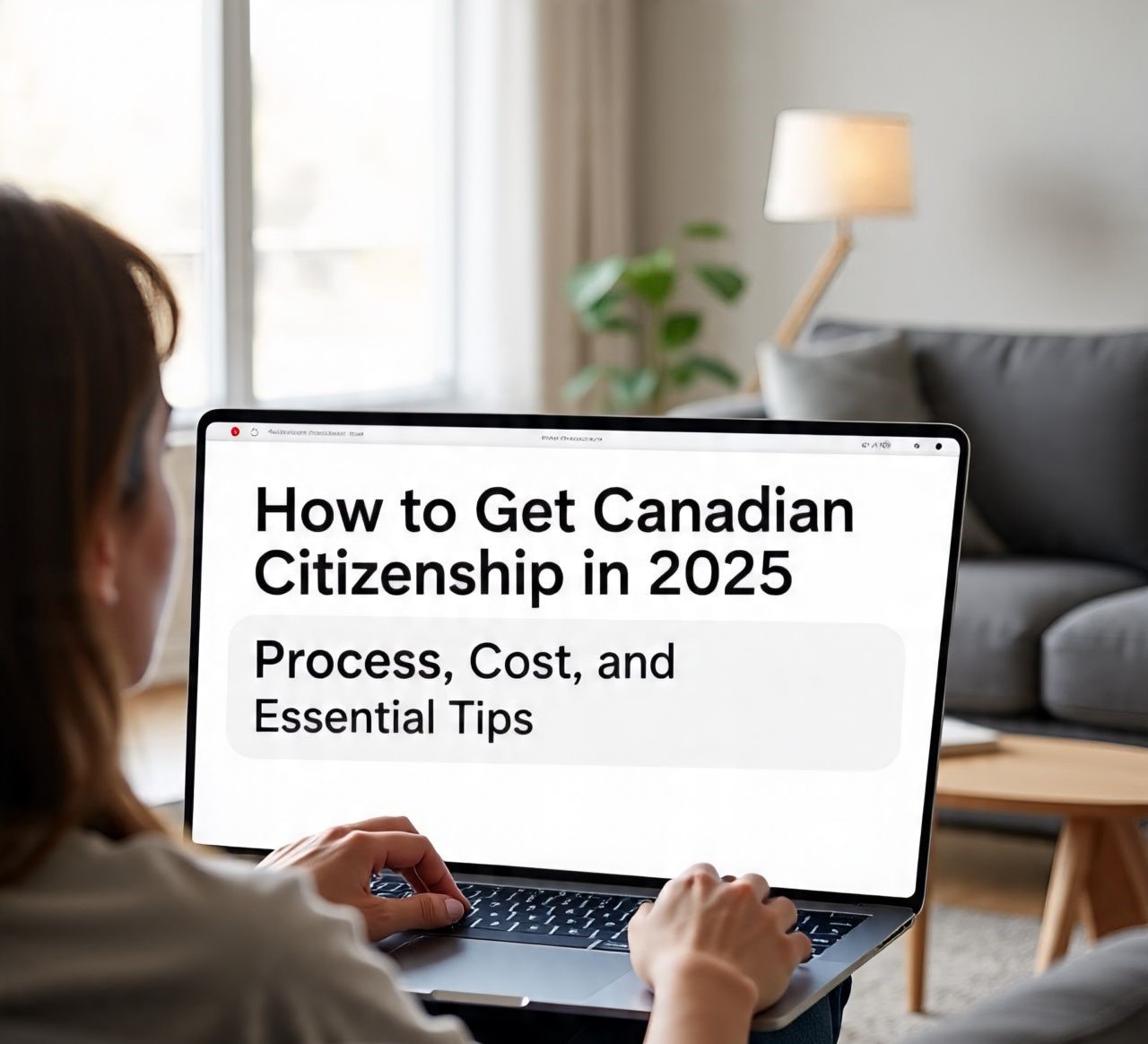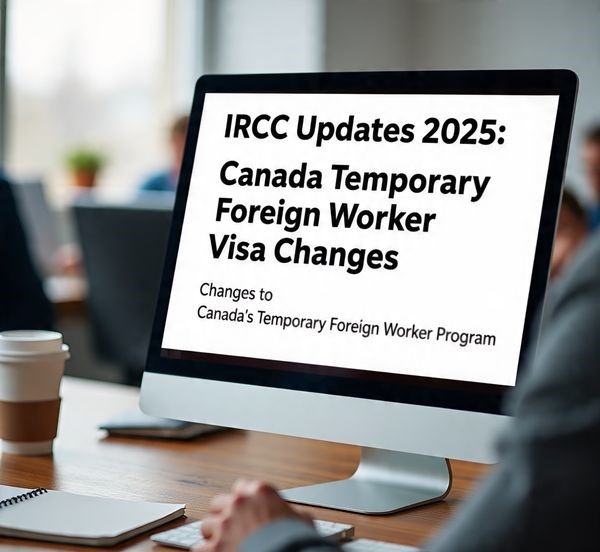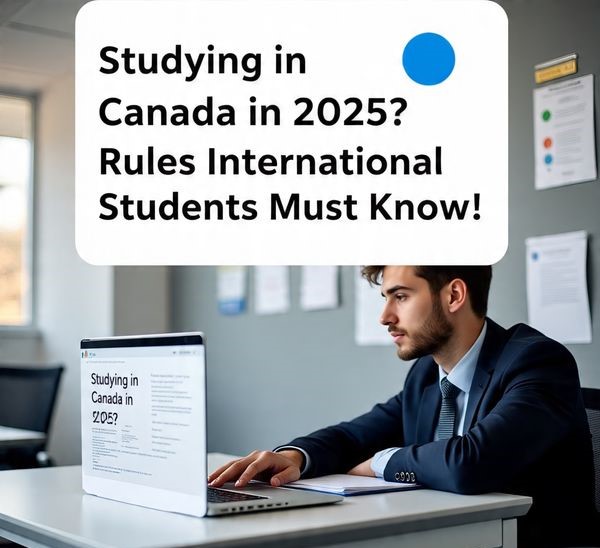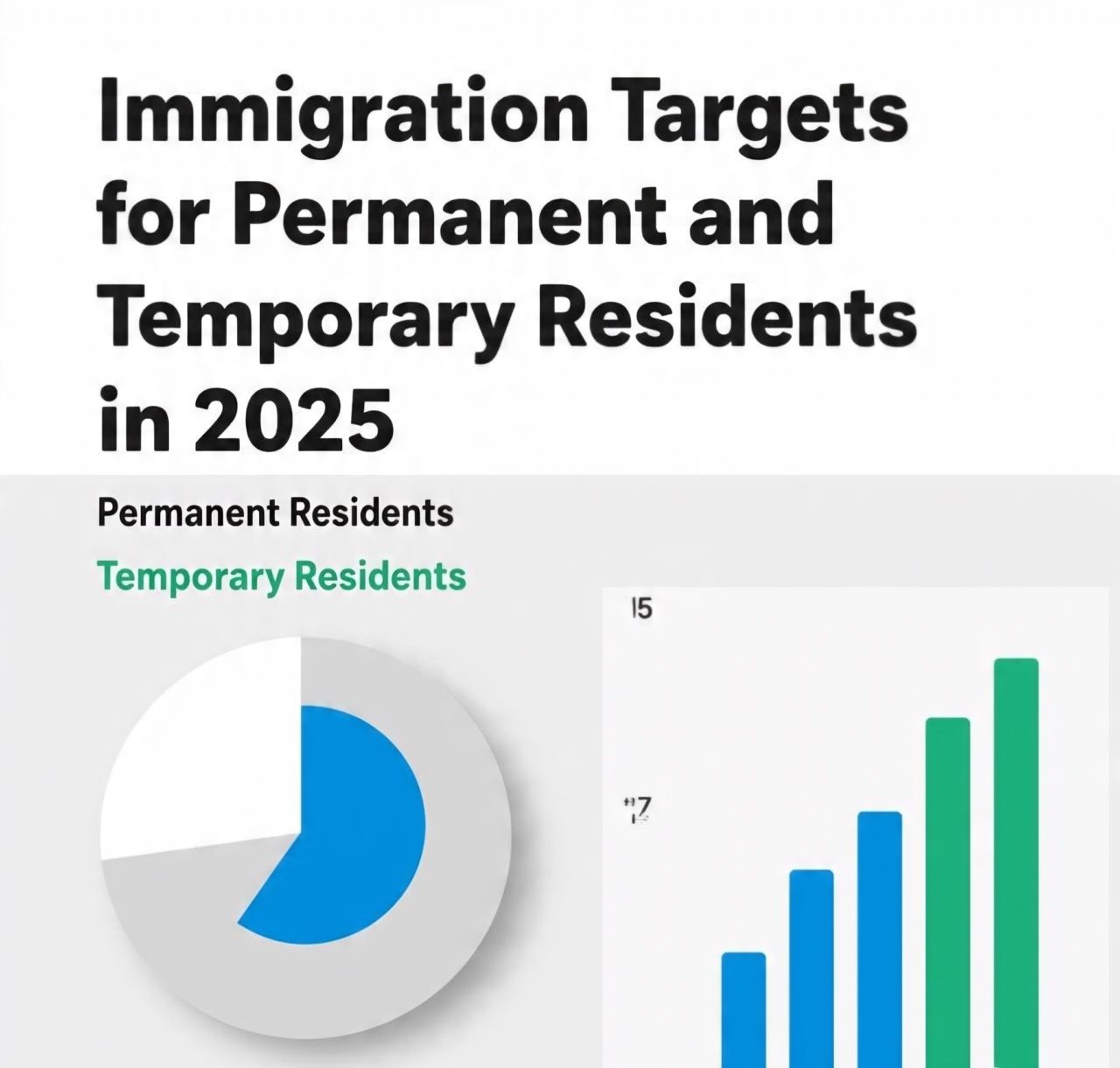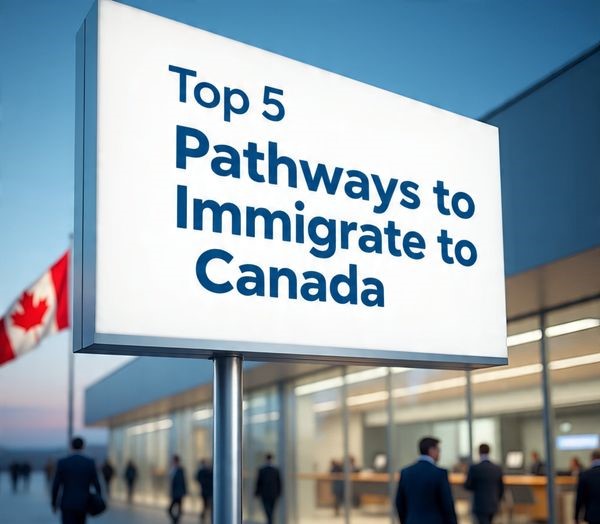Becoming a Canadian citizen is a rewarding milestone, especially after navigating the immigration journey from student or worker to permanent resident (PR). In 2025, the process remains straightforward but competitive, with updates like a fee increase for adults effective March 31. Drawing from real experiences and official guidelines, this article outlines the step-by-step process, costs, and tips to ensure a smooth application. Whether you’re just starting or close to eligibility, here’s what you need to know to join the Canadian family. Eligibility Requirements for Canadian Citizenship in 2025 To apply, you must meet these core criteria as a PR holder: • Physical Presence: Live in Canada for at least 1,095 days (3 years) in the last 5 years before applying. Use IRCC’s official Physical Presence Calculator to verify it factors in your PR date and any time spent abroad. Up to 365 days as a temporary resident (e.g., student or worker) can count as half-days toward this total. • Language Proficiency: If aged 18–54, prove skills in English or French at Canadian Language Benchmark (CLB) 4 or higher via approved tests. • Knowledge of Canada: Pass a citizenship test (for ages 18–54) on history, rights, and responsibilities. • Tax Filing: File taxes if required, for at least 3 years in the 5-year period. • No Prohibitions: No serious criminal record or security issues. • Intent to Reside: Plan to live in Canada or work for a Canadian entity abroad. Minors under 18 and adults 55+ are exempt from language, test, and oath requirements. Dual citizenship is allowed, but check your home country’s rules. Recent 2025 changes via Bill C-71 address the first-generation limit for citizenship by descent, potentially restoring eligibility for some “Lost Canadians” born abroad check IRCC’s “Am I a Canadian?” tool if applicable. Step-by-Step Process to Apply The process typically takes 12–18 months, based on IRCC’s 2025 service standard of 12 months for most complete applications. Here’s a 10-step guide: 1. Confirm Eligibility: Use the Physical Presence Calculator on IRCC’s website. If short on days, wait and recheck. 2. Gather Documents: Collect PR card, proof of language skills, tax records, and two pieces of ID. 3. Choose Application Method: Apply online (recommended for tracking) or by paper if ineligible for online. Avoid both to prevent rejection. 4. Pay Fees: Submit payment before finalizing see costs below. 5. Submit Application: Double- and triple-check for errors. Attach the fee receipt. 6. Monitor Emails: IRCC communicates via email; check spam/junk folders regularly to avoid missing deadlines. 7. Receive Acknowledgment: Get an Acknowledgment of Receipt (AOR) confirming processing has started (expect 1–3 months). 8. Take the Citizenship Test (Ages 18–54): If invited (within 30 days), complete a 20-question multiple-choice test in 45 minutes (updated from 30 minutes in some guidelines). Score 15/20 to pass, based on the Discover Canada guide. 9. Attend Interview if Needed: IRCC may request one for verification. 10. Oath Ceremony: If approved, attend the in-person ceremony (bring invitation, PR card, and ID). Receive your citizenship certificate now you’re a citizen! After approval, apply for a Canadian passport separately. Costs Involved in 2025 Fees are non-refundable and must be paid upfront: • Application Fee (Adult 18+): $630 CAD (processing $530 + right of citizenship $100). • Right of Citizenship Fee Increase: On March 31, 2025, this rises to $119.75 for adults (total adult fee becomes ~$649.75 if applying after). • Minor (Under 18): $100 CAD (processing $100; right of citizenship waived if a Canadian parent applies). • Other Costs: Language test (~$200–300 CAD), document translation (~$50/page), biometrics if required (~$85 CAD), and travel to ceremony. Pay online via credit/debit card. If fees change mid-mailing, IRCC will request the difference. Essential Tips for a Successful Application From personal journeys like transitioning from student to citizen, here are proven tips: • Avoid Common Mistakes: Miscalculating physical presence is the biggest pitfall even one day short leads to rejection. Use the calculator religiously and apply as soon as eligible, as rules can shift. • Prepare for the Test: Read the free Discover Canada guide (PDF or audio) multiple times, noting key events, symbols, and structures (including borders). Practice with free online quizzes to identify gaps. Study daily over 30 days for a perfect score. • Track Everything: Use the online portal for updates; respond promptly to emails to prevent delays. • Timeline Example: Submitted October 15, 2024; test invite December 23; test January 16, 2025; oath invite February 17; ceremony March 3 (total ~5 months—faster than average due to completeness). • For Families: Apply together if possible; minors don’t need separate right of citizenship fees. • Seek Help if Needed: If complex (e.g., Lost Canadian status), consult IRCC or a regulated consultant. Processing can extend to 18+ months for incomplete apps. • Post-Citizenship: Update your address with Service Canada for benefits; celebrate with family it’s a once-in-a-lifetime moment! Conclusion: Your Path to Canadian Citizenship Awaits In 2025, securing Canadian citizenship opens doors to voting, passports, and full rights while allowing dual citizenship. With residency at 1,095 days, proper preparation, and awareness of fee hikes, your journey can be smooth. Start by checking eligibility today delays happen, so apply early. Visit our website for personalized guides and updates. Share your citizenship story in the comments—what’s your next step? Let Worldbridge Immigration Services be your guide to a successful future in CanadaContact us: Website: www.theworldbridge.caEmail: info@theworldbridge.caPhone/WhatsApp: +1-416-727-7766Social Media: @worldbridgeHQ
In-Demand Jobs and Sectors to Secure Your Canada PR in 2025
Canada’s immigration system in 2025 is highly competitive, but targeting in-demand jobs can significantly boost your chances of securing Permanent Residency (PR). With the Immigration, Refugees and Citizenship Canada (IRCC) prioritizing specific sectors through Express Entry and Provincial Nominee Programs (PNPs), aligning your skills with labor market needs is key. This article highlights the top in-demand sectors, high-priority occupations, and actionable strategies to enhance your PR application. Canada’s Immigration Priorities for 2025 As of April 2025, Canada’s Express Entry system focuses on six category-based draws, targeting candidates in high-demand fields. These categories offer lower Comprehensive Ranking System (CRS) cutoffs (often ~470–475) compared to general draws (~500+), making PR more accessible for those with relevant skills or French proficiency. Top In-Demand Sectors for 2025 According to Statistics Canada, the following sectors have the highest job vacancy rates, driving PR opportunities: 1. Healthcare and Social Assistance: Accounts for 4.1% of job openings, fueled by an aging population and healthcare demands. 2. Accommodation and Food Services: Represents 4% of vacancies, with roles like cooks and butchers in high demand. 3. Construction and Skilled Trades: Critical for addressing Canada’s housing crisis and infrastructure needs. High-Demand Jobs in Healthcare and Social Assistance Healthcare roles are a top priority, with recent Express Entry draws inviting thousands at lower CRS scores. Key occupations include: • Dental Hygienists (NOC 32111) • Licensed Practical Nurses (NOC 32101) • Pharmacists (NOC 31120) • Pharmacy Technicians (NOC 32124) These roles benefit from targeted draws, making them a strong pathway to PR. Opportunities in Accommodation and Food Services The food services sector offers significant opportunities, especially with cooks (NOC 63200) newly added to the skilled trades category. Butchers (NOC 63201) are also in demand. IRCC plans to issue at least 3,000 Invitations to Apply (ITAs) for these roles by the end of 2025, creating a clear PR pathway for culinary professionals. Construction and Skilled Trades Pathways Skilled trades are vital to Canada’s economy, offering well-paid jobs and accessible PR routes. High-demand roles include: • Carpenters (NOC 72310) • Electricians (NOC 72200) • Plumbers (NOC 72300) • Roofers (NOC 73110) These occupations not only provide PR opportunities but also allow long-term prospects, such as starting your own business. Key Strategies for Students and Workers To maximize your PR chances: 1. Choose In-Demand Programs: Students should select study programs in healthcare, trades, or food services to align with labor needs and ensure Post-Graduation Work Permit (PGWP) eligibility. 2. Explore PNPs: Consider provinces like Manitoba or Atlantic Canada, which offer easier PNP access compared to Ontario, British Columbia, or Quebec. 3. Learn French: Achieving CLB 7 in French can add up to 50 CRS points, boosting eligibility through Francophone-focused draws, a priority until at least 2029. 4. Gain Canadian Experience: Work or study in Canada to strengthen your Express Entry profile. Conclusion: Plan Smart for PR Success Focusing on in-demand sectors like healthcare, food services, and skilled trades can open doors to Canada PR in 2025. By aligning your career or studies with these priorities, leveraging PNPs, and improving French skills, you can position yourself for success. Start early, build relevant skills, and stay informed to navigate the competitive landscape. Visit our website for detailed guides on Express Entry and PNP applications. Share your PR journey in the comments—what sector are you targeting?
IRCC Updates 2025: Canada Temporary Foreign Worker Visa Changes
Canada’s Temporary Foreign Worker Program (TFWP) is under intense scrutiny in 2025, with significant updates and debates shaping its future. As the country grapples with labor shortages and economic pressures, recent changes and a bold proposal to abolish the program are making headlines. Whether you’re a foreign worker, Canadian employer, or job seeker, here’s what you need to know about the latest TFWP developments to plan your next steps. 2025 TFWP Targets and Recent Restrictions The TFWP remains a critical pathway for addressing labor shortages, with a federal target of 82,000 new arrivals in 2025 across sectors like agriculture, hospitality, caregiving, and construction. However, 2024 introduced stricter rules that continue into 2025: • Low-Wage Stream Caps: Employers can hire only 10% of their workforce through the low-wage stream, down from 20%. • High-Unemployment Restrictions: Regions with 6% or higher unemployment cannot hire low-wage foreign workers. • Shorter Work Permits: Low-wage workers are limited to one-year permits, reduced from two years. These changes aim to balance labor needs with fair opportunities for Canadians, requiring employers to prove no local workers are available via Labour Market Impact Assessments (LMIAs). Debate Over Abolishing the TFWP Conservative leader Pierre Poilievre has proposed abolishing the TFWP entirely, except for a separate track for agriculture due to acute labor shortages. His plan includes: • No New Permits: Halting TFWP permits nationwide, with a transition period in low-unemployment regions. • Focus on Canadians: Encouraging businesses to raise wages to attract local workers instead of relying on foreign labor. This proposal sparks concerns about filling gaps in critical sectors like healthcare (short ~100,000 workers), farming (heavily reliant on seasonal labor), and construction (vital for the housing crisis). Critics argue that ending the program could disrupt businesses, while supporters claim it protects Canadian jobs and wages. Government’s Stance: Reform, Not Removal Prime Minister Mark Carney has rejected calls to end the TFWP, emphasizing its role in Canada’s economy. The government favors ongoing reforms, such as: • Tighter Oversight: Enhanced LMIA scrutiny to ensure genuine labor shortages. • Streamlined Transitions: Pathways for temporary workers to gain permanent residency, especially in high-demand fields. These reforms aim to address criticisms that the program allows businesses to prioritize cheaper foreign labor over Canadians. What This Means for You The TFWP debate impacts multiple groups: • Foreign Workers: Stricter rules mean shorter stays and tougher application processes. If the program ends, opportunities could shrink, except in agriculture. • Employers: Businesses face increased pressure to hire locally or navigate complex LMIAs, especially in high-unemployment areas. • Canadians: The push for higher wages could open job opportunities, but labor shortages may persist in key industries. For now, the TFWP remains active, but its future hinges on ongoing national discussions. Workers and employers should monitor updates closely, as further changes could reshape opportunities in 2025. Stay Prepared for Canada’s Immigration Shift Canada’s immigration system is evolving rapidly. Whether you’re applying for a work permit or hiring staff, stay informed about TFWP changes. Visit our website for the latest guides on navigating Canada’s labor market. Share your thoughts in the comments how do these updates affect your plans? Let Worldbridge Immigration Services be your guide to a successful future in CanadaContact us: Website: www.theworldbridge.caEmail: info@theworldbridge.caPhone/WhatsApp: +1-416-727-7766Social Media: @worldbridgeHQ
Studying in Canada in 2025? NEW Rules International Students Must Know!
Canada remains a top destination for international students, but 2025 brings significant immigration policy changes that impact your journey. From stricter study permit rules to updated work permit conditions, these updates affect pre-planning, studying, and post-graduation stages. Here’s a concise guide to the key changes announced in 2024, still relevant for 2025, to help you navigate your path to studying in Canada. Pre-Planning Stage: Tighter Study Permit Rules 1. Reduced Study Permit Cap: Canada has capped new study permits at 360,000 for 2024, a 47% drop from 683,000 in 2023, to address housing and cost-of-living pressures. This cap continues into 2025, making applications more competitive. 2. Increased Proof of Funds: Effective January 1, 2024, single applicants must show $20,635 CAD (up from $10,000) for living expenses, plus tuition. This ensures financial stability for your studies. 3. Letter of Acceptance (LOA) Verification: Since December 2023, Designated Learning Institutions (DLIs) must verify LOAs directly with IRCC via a compliance portal, reducing fraud and ensuring program integrity. 4. Provincial Attestation Letter (PAL): Most applicants now need a PAL, confirming their spot within a province’s student quota. Your DLI handles this, but you must include it in your application. 5. End of Fast-Track Programs: The Student Direct Stream (SDS) and Nigeria Student Express (NSE) ended on November 8, 2024. All applicants now use the regular study permit stream, leveling the process. Studying in Canada: New Work and Transfer Rules 1. Increased Off-Campus Work Hours: As of November 2024, international students can work up to 24 hours per week off-campus during academic sessions (up from 20), offering more flexibility to balance studies and income. 2. Stricter School/Program Transfers: Since November 8, 2024, changing schools or programs requires a new study permit application, not just an IRCC update. Plan your choice carefully to avoid extra costs and delays. Post-Graduation Work Permit (PGWP) Stage: New Eligibility Criteria 1. No PGWP for Public-Private College Programs: As of May 15, 2024, graduates from public-private partnership programs (private colleges licensed by public ones) are no longer eligible for PGWPs due to quality concerns. 2. Language Proficiency Requirement: Starting November 1, 2024, PGWP applicants must prove language skills: CLB 7 (English/French) for university bachelor’s, master’s, or doctoral graduates; CLB 5 for college/non-university programs. 3. Eligible Fields of Study: For study permits applied on or after November 1, 2024, PGWP eligibility is restricted to programs in agriculture, education, healthcare, STEM, trade, or transport—fields tied to Canada’s long-term labor shortages. 4. Master’s Program Boost: Since February 15, 2024, master’s programs (8 months to under 2 years) qualify for a 3-year PGWP, provided other criteria are met, offering more time to gain Canadian work experience. 5. Spousal Open Work Permit Limits: As of 2024, spousal open work permits are only available for students in master’s, doctoral, or select professional programs (e.g., law, medicine). Undergraduate or diploma students’ spouses are no longer eligible. Your Path to Success in 2025 These changes make planning critical. Choose a PGWP-eligible program at a reputable DLI, ensure you have sufficient funds, and verify your program aligns with in-demand fields like healthcare or trades. Once in Canada, stay committed to your studies, meet permit conditions, and prepare early for PGWP requirements, like language tests. Despite tougher rules, Canada remains welcoming for students who plan strategically. Visit our website for detailed guides on study permits and PGWPs. Share your thoughts in the comments what challenges or opportunities do you see in these updates? Let Worldbridge Immigration Services be your guide to a successful future in CanadaContact us: Website: www.theworldbridge.caEmail: info@theworldbridge.caPhone/WhatsApp: +1-416-727-7766Social Media: @worldbridgeHQ
Immigration Targets for Permanent and Temporary Residents in 2025
Canada’s 2025-2027 Immigration Levels Plan, announced by Immigration, Refugees and Citizenship Canada (IRCC) on October 24, 2024, outlines a balanced approach to immigration amid challenges like housing shortages and labor needs. For the first time, the plan includes targets for both permanent residents (PR) and temporary residents, aiming to reduce overall volumes to 5% of the population by the end of 2026. This shift addresses demographic pressures from an aging population while prioritizing economic growth and integration. If you’re planning to immigrate, understanding these targets is key to aligning your application strategy. Permanent Resident Targets for 2025 The plan sets a target of 395,000 permanent residents for 2025, a 21% reduction from the 485,000 in 2024 and well below the previous 500,000 projection. This decrease across economic (62%), family (24%), and humanitarian (15%) categories reflects efforts to ease infrastructure strains while sustaining workforce contributions. • Economic Class: Approximately 232,000 admissions, focusing on skilled workers in tech, healthcare, and trades. Over 40% will transition from in-Canada temporary residents via programs like the Canadian Experience Class. • Family Reunification: Around 94,000, including spouses, children, and parents/grandparents, with streamlined processing to reduce backlogs. • Refugees and Humanitarian: About 58,000, maintaining Canada’s commitment to protection while targeting vulnerable groups like human rights defenders. These targets emphasize French-speaking immigrants outside Quebec, aiming for 8.5% (about 29,325) of PR admissions to bolster Francophone communities. Temporary Resident Targets for 2025 New temporary resident arrivals are capped at 673,650 in 2025, including study and work permits for first-time entrants. This holistic approach supports labor markets without overwhelming services, with international students at 45% and workers filling the rest. • International Students: 305,900 study permits, aligned with a 10% further reduction from 2024 caps. Reforms tighten Post-Graduation Work Permit (PGWP) eligibility to match labor needs, excluding most master’s programs under 16 months from spousal open work permits. • Temporary Foreign Workers: 367,750 via the Temporary Foreign Worker Program (TFWP) and International Mobility Program (IMP). Focus on high-skill roles, with stricter Labour Market Impact Assessments (LMIAs), wage thresholds, and caps on low-wage streams in high-unemployment areas. The plan anticipates significant outflows of existing temporary residents (about 2.8 million over three years), leading to a net population decline of 0.2% in 2025. Implications for Applicants These targets create opportunities for skilled temporary residents to transition to PR, especially in in-demand sectors, but increase competition. Express Entry category-based draws will prioritize healthcare, trades, and French proficiency, often with lower CRS cutoffs. Provincial Nominee Program (PNP) allocations drop to 55,000, favoring regional needs in provinces like Ontario and British Columbia. To prepare: 1. Assess Eligibility: Check if your skills align with economic priorities or if you qualify for in-Canada transitions. 2. Boost Your Profile: Improve language skills (e.g., French for up to 50 CRS points) and gain Canadian experience. 3. Monitor Updates: Quebec’s separate plan targets ~50,000 PRs; watch for pilot expansions in rural and Atlantic regions. Conclusion: A Sustainable Path Forward Canada’s 2025 targets promote managed growth, reducing the housing gap by 670,000 units by 2027 while supporting GDP per capita. For temporary residents eyeing PR or newcomers, this is a call to action focus on high-demand skills and early planning. The future remains welcoming for those who fit the strategy. Visit out website for detailed guides on Express Entry and PNP applications. Share your questions in the comments we’re here to help you navigate Canada’s immigration journey! Let Worldbridge Immigration Services be your guide to a successful future in CanadaContact us: Website: www.theworldbridge.caEmail: info@theworldbridge.caPhone/WhatsApp: +1-416-727-7766Social Media: @worldbridgeHQ
Canada PR 2025: New Immigration Rules and Opportunities to Secure Permanent Residency
Canada’s immigration landscape is evolving in 2025, bringing fresh opportunities and challenges for those aspiring to become permanent residents (PR). With updated policies, a focus on in-demand occupations, and new pathways like category-based Express Entry draws, now is the time to align your skills and strategy. This article breaks down the latest changes, highlights key opportunities in healthcare, food, and trade sectors, and explains how French language skills can give you a competitive edge. Read on to discover how to boost your chances of securing Canada PR in 2025. In-Demand Occupations for Canada PR in 2025 Canada’s labor market needs are shaping immigration priorities, opening doors for skilled workers in specific fields. The government has recently added cooks to the list of trade occupations eligible for PR pathways, creating exciting opportunities for culinary professionals. Other high-demand trades include: • Butchers • Welders • Construction workers These roles reflect Canada’s push to fill critical gaps in its workforce, particularly in industries vital to economic growth. If your expertise lies in one of these areas, 2025 could be your year to make the move. Express Entry: Shift to Category-Based Draws The Express Entry system, a cornerstone of Canada’s economic immigration, is undergoing significant changes. General draws are becoming less frequent, with the Immigration, Refugees and Citizenship Canada (IRCC) prioritizing category-based invitations. These draws target candidates with skills that address urgent national needs, particularly: • Healthcare professionals (e.g., nurses, pharmacists, dentists, dieticians) • French-speaking candidates Recent category-based draws have invited thousands of applicants, often with lower Comprehensive Ranking System (CRS) cutoffs compared to general draws (ranging from ~500–739 points). If you work in healthcare or speak French, these targeted invitations could significantly improve your PR chances. Booming Sectors: Healthcare, Food, and Trades Canada’s labor shortages are most pronounced in specific industries, creating golden opportunities for PR applicants. • Healthcare: With 4.1% of job openings in this sector, professionals like nurses, pharmacists, dentists, and dieticians are in high demand. Recent Express Entry draws have prioritized these roles, reflecting Canada’s need to strengthen its healthcare system. • Food and Accommodation: This sector accounts for 4% of job openings, with cooks and related roles gaining prominence. However, applicants in these fields should note changes to spousal work permit rules (detailed below). • Trades: Welders, construction workers, and butchers remain critical to Canada’s infrastructure and food supply chains, offering stable PR pathways. Aligning your skills with these sectors can position you as a top candidate in 2025. Spousal Open Work Permit Rule Changes A significant update for 2025 affects spousal open work permits. Previously, spouses of many PR applicants could automatically apply for open work permits. Now, eligibility is restricted to: • Applicants in Tier 0 or 1 occupations (high-skill roles, e.g., management, specialized professions) • Select Tier 2 to 3 roles in healthcare and trades Unfortunately, spouses of applicants in food and accommodation sectors may no longer qualify, impacting family planning for some candidates. If you’re applying with a spouse, verify your occupation’s tier to understand your options. French Language Skills: A Game-Changer for CRS Scores French proficiency is now a major advantage in Canada’s immigration system. Achieving Canadian Language Benchmark (CLB) 7 in French can add up to 50 additional CRS points, significantly boosting your Express Entry ranking. This is especially critical for category-based draws targeting French-speaking candidates, as Canada aims to support its Francophone communities outside Quebec. If you’re considering PR, investing time in learning or improving your French could be a strategic move. How to Maximize Your Chances for Canada PR in 2025 With Canada reducing permanent resident targets to 395,000 in 2025 (down from 485,000 in 2024) to address housing and infrastructure concerns, competition is fierce. Here’s how to stand out: 1. Target In-Demand Occupations: Tailor your application to align with healthcare, trades, or food sector roles. 2. Leverage Category-Based Draws: Check your eligibility for healthcare or French-language draws, which often have lower CRS cutoffs. 3. Boost Your CRS Score: Improve your French skills (aim for CLB 7), gain Canadian work experience, or pursue higher education to increase points. 4. Stay Informed: Monitor IRCC updates, as policies like the Provincial Nominee Program (PNP) cap at 55,000 nominations in 2025. 5. Plan for Spousal Permits: Confirm your occupation’s tier to ensure spousal work permit eligibility. Conclusion: Seize the Opportunity in 2025 Canada’s immigration system in 2025 offers exciting possibilities for skilled workers, particularly in healthcare, food, and trades. However, with stricter rules, reduced targets, and changes like limited spousal work permits, careful planning is essential. By aligning your skills with in-demand occupations, improving your French proficiency, and targeting category-based Express Entry draws, you can significantly enhance your chances of securing permanent residency. Ready to take the next step? Visit our website for the full guide to Canada PR 2025, including detailed resources and expert tips. Share your thoughts or questions in the comments below we’d love to hear from you Let Worldbridge Immigration Services be your guide to a successful future in CanadaContact us: Website: www.theworldbridge.caEmail: info@theworldbridge.caPhone/WhatsApp: +1-416-727-7766Social Media: @worldbridgeHQ
Top 5 Pathways to Immigrate to Canada
Navigating Canadian immigration can be complex, but understanding the main pathways is the first step. 1. Skilled Worker Programs (Express Entry & PNP) This is the most common pathway for professionals. 2. Study Permit Pathway Ideal for younger individuals or those seeking to enhance their credentials. 3. Business & Talent Programs For entrepreneurs, investors, and individuals with unique skills. 4. Family Sponsorship For those with a close family member who is a Canadian citizen or permanent resident. 5. Humanitarian Pathways For those fleeing persecution, conflict, or war. Let Worldbridge Immigration Services be your guide to a successful future in CanadaContact us: Website: www.theworldbridge.caEmail: info@theworldbridge.caPhone/WhatsApp: +1-416-727-7766Social Media: @worldbridgeHQ
Express Entry in 2025: Key Trends and Strategic Advice
The Express Entry system in 2025 continues to be highly competitive, with CRS scores remaining stubbornly high. Understanding the underlying factors is crucial for developing a successful immigration strategy. Current State of Express Entry Critical Factors Influencing the System 1.The Power of Foreign Work Experience: Despite calls for its removal, foreign work experience remains a cornerstone of the Express Entry system, particularly for the Federal Skilled Worker Program. Removing it would effectively close Canada’s doors to global talent, contradicting official policy. This factor continues to be a major differentiator for high-scoring candidates. 2.The Rise of French-Language Proficiency: Proficiency in French has become a powerful strategic advantage. Candidates with strong French scores continue to be invited through category-based draws with significantly lower CRS scores (e.g., draws in the 481 range). 3.Category-Based Draws: Targeted draws for specific sectors like Healthcare and French-speakers are regular occurrences. These draws siphon candidates from the general pool, reducing the number of ITAs available for general draws and contributing to higher overall scores. Predictions for the Remainder of 2025 Strategic Advice for Candidates If your CRS score is in the low 500s, passive waiting is not a viable strategy. To remain competitive, you must actively work to increase your score: A Strong Warning Against “Gaming” the System Conclusion: The Express Entry landscape in 2025 demands a proactive and genuine approach. The most reliable path to success is through legitimately improving your profile via language skills, education, and work experience, while strictly avoiding any strategies that could be perceived as fraudulent. Let Worldbridge Immigration Services be your guide to a successful future in CanadaContact us: Website: www.theworldbridge.caEmail: info@theworldbridge.caPhone/WhatsApp: +1-416-727-7766Social Media: @worldbridgeHQ
5 Common Mistakes to Avoid in Your Spousal Sponsorship Application
Navigating the spousal sponsorship process can be complex, and seemingly small errors can lead to significant delays or even a refusal. Understanding these common pitfalls is the first step toward submitting a strong, successful application. 1. Choosing the Wrong Application Stream Canada offers two pathways: Inland (for couples living together in Canada) and Outland (processed through a visa office outside Canada). The choice is critical. Selecting the incorrect stream for your situation can result in longer processing times or complications with admissibility. 2. Incomplete Applications or Outdated Forms IRCC requires applications to be 100% complete upon submission. Common errors include: An incomplete application package will be returned unprocessed, causing unnecessary delays of several months. 3. Insufficient Evidence of a Genuine Relationship A marriage certificate is not enough. You must proactively demonstrate that your relationship is authentic and ongoing. Avoid simply dumping thousands of photos or messages. Instead, provide quality evidence that tells your story, such as: 4. Failing to Disclose Past Immigration Issues Hoping IRCC won’t discover a past visa refusal, overstay, or other immigration problem is a grave mistake. Full transparency is mandatory. 5. Treating It as a Simple Paperwork Exercise The sponsorship process is a legal proceeding, not a simple form-filling exercise. Inconsistencies, vague answers, or a poorly organized application can raise doubts about the genuineness of your relationship or your eligibility. Final Advice: The key to a smooth application is meticulous preparation, honesty, and choosing the right strategy for your unique circumstances. Taking the time to get it right the first time is the most efficient path to reuniting with your loved one in Canada. Let Worldbridge Immigration Services be your guide to a successful future in CanadaContact us: Website: www.theworldbridge.caEmail: info@theworldbridge.caPhone/WhatsApp: +1-416-727-7766Social Media: @worldbridgeHQ
Canada Spousal Sponsorship Processing Times: A 2025 Guide
Navigating the spousal sponsorship process requires patience and understanding. While each application is unique, here is a general overview of what to expect in terms of timing and procedure. Overall Processing Time The standard processing goal for most spousal sponsorship applications is approximately 12 months from the day Immigration, Refugees and Citizenship Canada (IRCC) receives a complete application until a final decision is made. However, this timeline can vary significantly. Straightforward cases with complete documentation may be processed faster, while complex cases requiring additional verification or interviews will understandably take longer. The Step-by-Step Process and Timeline Here is a breakdown of the key stages your application will go through: 1. Acknowledgement of Receipt (AOR) 2. Sponsor Eligibility Assessment 3. Principal Applicant Eligibility and Processing 4. Medical Exam and Biometrics Request 5. (For Inland Applicants) Open Work Permit 6. Interview (If Required) 7. Decision Made & Confirmation of Permanent Residence (COPR) Outland applicants will receive a COPR and a permanent resident visa (if required) to travel to Canada to finalize their status. Inland applicants will be scheduled for an appointment to finalize their status inside Canada. Key to a Smooth Process The single most effective way to ensure timely processing is to submit a perfectly complete and well-organized application from the outset. Missing forms, unsigned documents, or insufficient proof of relationship are the most common reasons for significant delays or returns. Meticulous preparation is your greatest asset in this process. Let Worldbridge Immigration Services be your guide to a successful future in CanadaContact us: Website: www.theworldbridge.caEmail: info@theworldbridge.caPhone/WhatsApp: +1-416-727-7766Social Media: @worldbridgeHQ

